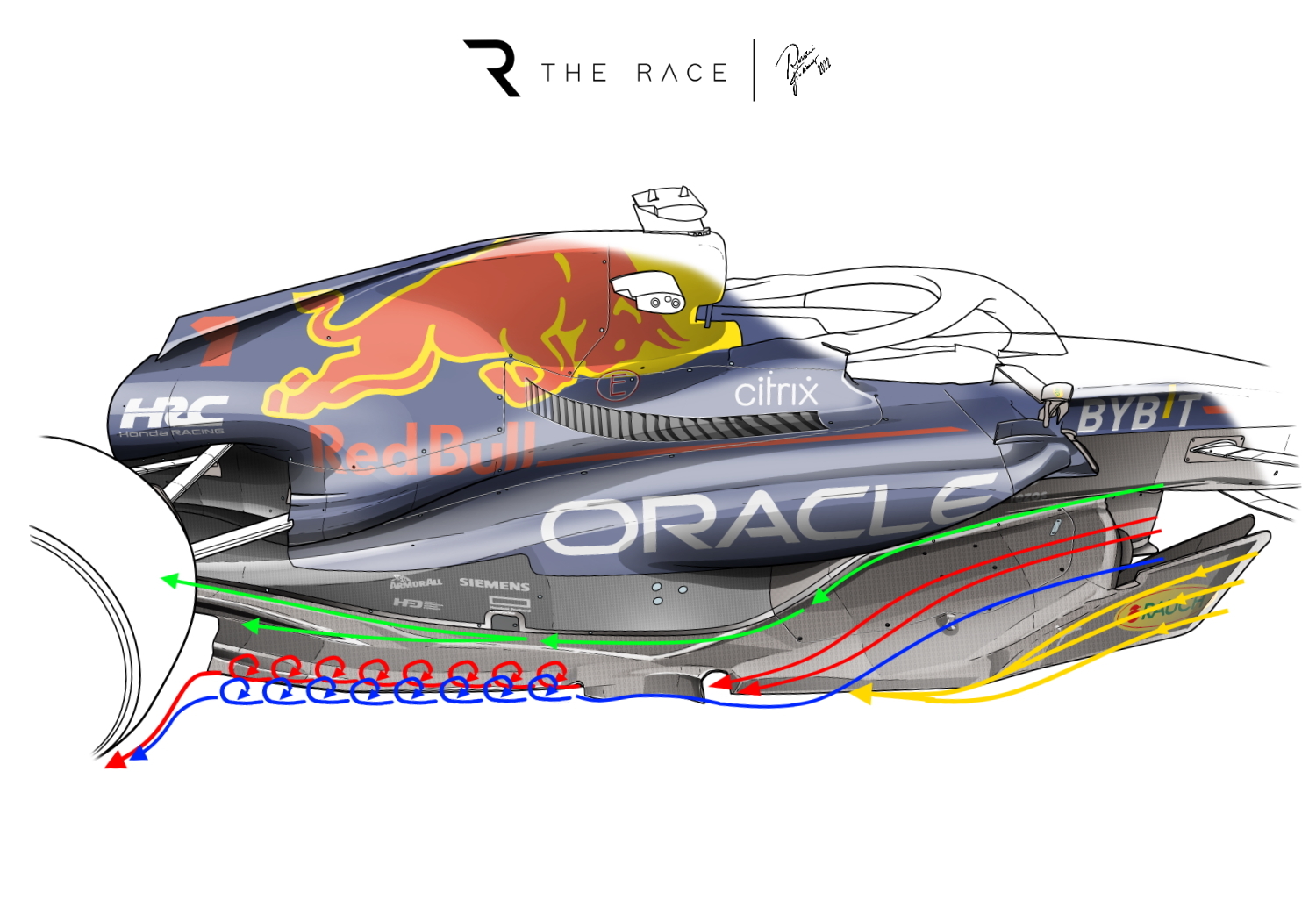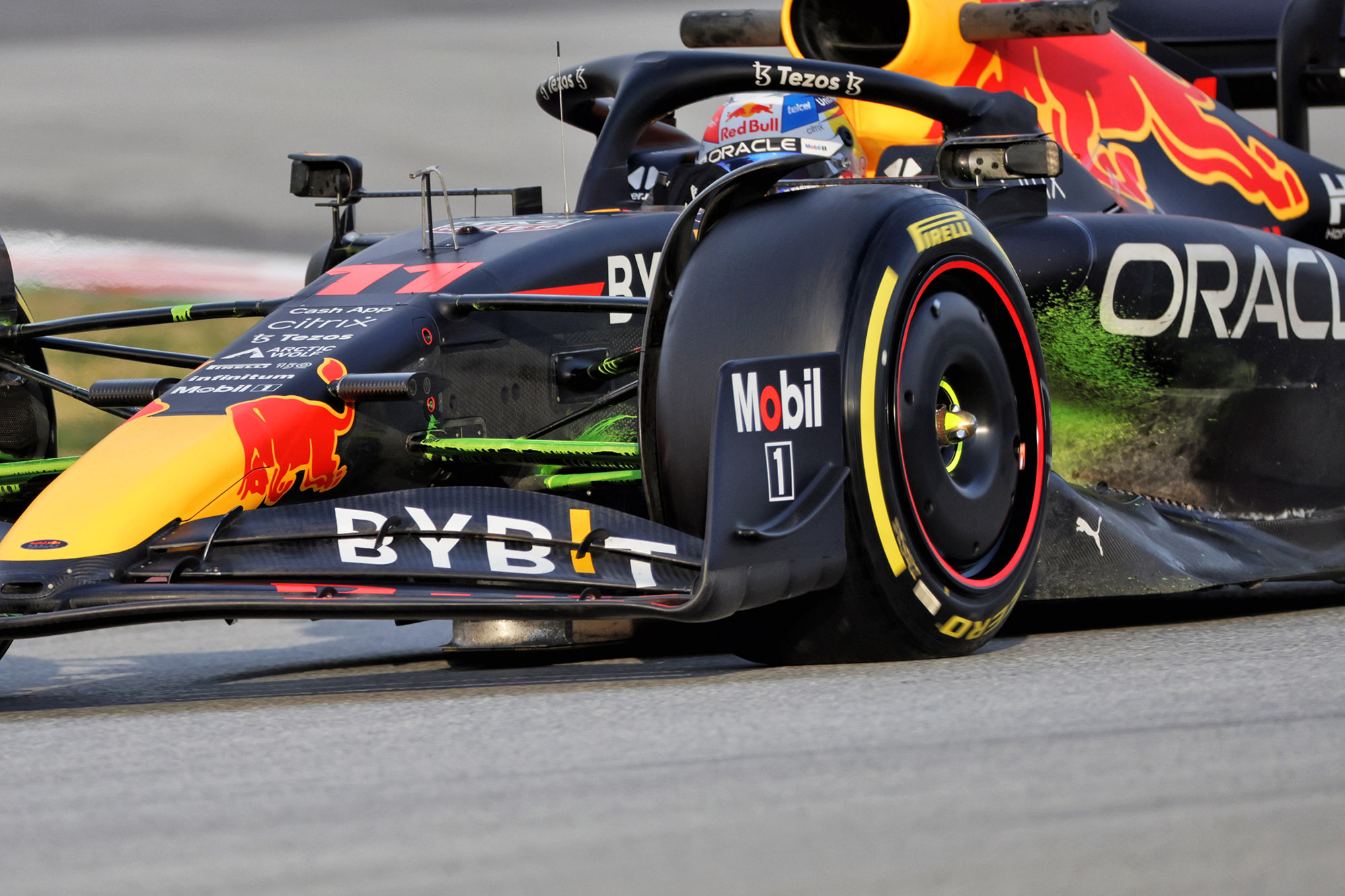Up Next

Illustrations by Rosario Giuliana
The Red Bull sidepod design with the ultra-aggressive undercut at the front has been one of the big technical talking points of the 2022 Formula 1 pre-season so far because it is one of the most visually distinctive designs.
The design is attempting to do the same thing that all of the F1 teams are doing with their sidepods, it’s just one interpretation of it.
It’s all about ensuring the highest-quality, highest-speed airflow to the rear of the car and maximising the ground effect aero by sealing the underfloor.
We talk a lot about flow structures and vortices, but sometimes it’s easier to understand what’s happening with some visual aids.
The front of the sidepods are designed to push the airflow around the sides of the car. That airflow is sent in several different directions.

The green arrows indicate the airflow coming over the top of the underfloor surface. This flows along the undercut of the sidepod and is fed into the gap between the diffuser inner wall and the rear wheel fairing.
There are some very powerful turning vanes mounted directly on the rear wheel insider fairing picking up that flow and turning it upwards, so generating quite a bit of suction on this area inside the wheel.
These winglets put aerodynamic load directly onto the rear-wheel assembly without it going through the suspension. That means the downforce is there immediately and consistently when the chassis is moving during braking.
The red arrows indicate the airflow coming over the top surface of the underfloor that then joins up with the airflows in blue and yellow.
Together, these set up a vortex that travels down the outer edge of the rear part of the floor. This will be rotating clockwise on this side of the car when looked at from the front.
These are crucial for sealing the underfloor from the outside world, which means the underfloor will produce much higher aerodynamic load. The last generation of ground effect F1 cars had side skirts that touched the ground, but these vortices form ‘virtual’ skirts to maintain the low pressure area beneath the underfloor.

Red Bull also has two small cut outs to help initiate and then give room for these vortices to form.
Because of how the tyre displaces the air in front of it when the tread rotates onto the track surface some of this airflow will go around the outside of the tyre, some around the inside. This is commonly known as tyre squirt.





